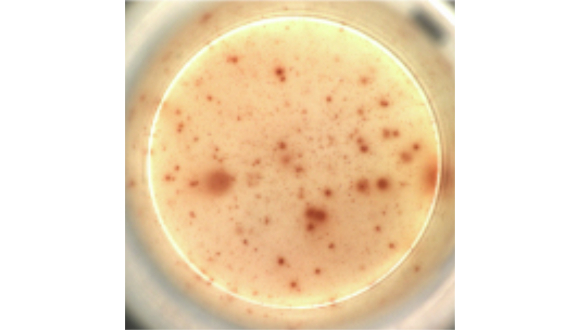TAU technology offers single-injection treatment for HIV infection

Researchers suggest possibility of a one-time treatment for AIDS
Support this researchA new study from Tel Aviv University (TAU) offers a new and unique treatment for AIDS which may be developed into a vaccine or a one-time treatment for patients with HIV.
The study examined the engineering of type B white blood cells in the patient’s body to secrete anti-HIV antibodies in response to the virus. The treatment was administered to model animals with great success. All model animals who had received the treatment responded to the injection and had high quantities of the antibody that neutralizes HIV in their blood.
The study was led by Dr. Adi Barzel and Ph.D. student Alessio Nehmad, both from the School of Neurobiology, Biochemistry and Biophysics at TAU’s George S. Wise Faculty of Life Sciences and the Dotan Center for Advanced Therapies, in collaboration with the Sourasky Medical Center (Ichilov). The study was conducted in collaboration with additional researchers from Israel and the U.S. and was published on June 9, 2022, in Nature.
Over the last two decades, the lives of many AIDS patients have improved as a result of the administration of treatments that change the disease from lethal to chronic. However, a permanent cure does not exist. Dr. Barzel’s laboratory has developed a one-time injection that utilizes type B white blood cells that could be genetically engineered inside the patient’s body to secrete neutralizing antibodies against the HIV virus that causes the disease.
B cells are a type of white blood cells responsible for generating antibodies against viruses, bacteria, and more. B cells are formed in bone marrow. When they mature, B cells move into the blood and lymphatic system and from there to the different body parts.
“Until now, only a few scientists, and we among them, had been able to engineer B cells outside of the body, and in this study we were the first to do this in the body and to make these cells generate desired antibodies,” Dr. Barzel explains. “The genetic engineering is done with viral carriers derived from viruses that were engineered so as not to cause damage but only to bring the gene coded for the antibody into the B cells in the body.
“Additionally, we have been able to accurately introduce the antibodies into a desired site in the B cell genome. All model animals who had been administered the treatment responded and had high quantities of the desired antibody in their blood. We produced the antibody from the blood and made sure it was actually effective in neutralizing the HIV virus in the lab dish.”
The genetic editing was done with a CRISPR. The bacteria use the CRISPR systems as a sort of molecular “search engine” to locate viral sequences and cut and disable them. Two biochemists who had figured out the sophisticated defense mechanism, Emmanuelle Charpentier and Jennifer Doudna, were able to reroute for the cleavage of any DNA of choice. The technology has since been used to either disable unwanted genes or repair and insert desired genes. Doudna and Charpentier earned international recognition when they became Nobel Prize winners for chemistry in 2020.
“We incorporate the capability of a CRISPR to direct the introduction of genes into desired sites along with the capabilities of viral carriers to bring desired genes to desired cells,” Nehmad says. “Thus, we are able to engineer the B cells inside the patient’s body. We use two viral carriers of the AAV family, one carrier codes for the desired antibody and the second carrier codes the CRISPR system. When the CRISPR cuts in the desired site in the genome of the B cells, it directs the introduction of the desired gene: the gene coding for the antibody against the HIV virus, which causes AIDS.”
There is currently no genetic treatment for AIDS, so the research opportunities are vast. “We developed an innovative treatment that may defeat the virus with a onetime injection, with the potential of bringing about tremendous improvement in the patients’ condition,” Dr. Barzel concludes. “When the engineered B cells encounter the virus, the virus stimulates and encourages them to divide, so we are utilizing the very cause of the disease to combat it. Furthermore, if the virus changes, the B cells will also change accordingly in order to combat it, so we have created the first medication ever that can evolve in the body and defeat viruses in the ‘arms race.’
“Based on this study we can expect that over the coming years we will be able to produce in this way a medication for AIDS, for additional infectious diseases, and for certain types of cancer caused by a virus, such as cervical cancer, head and neck cancer and more.”